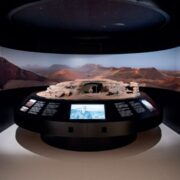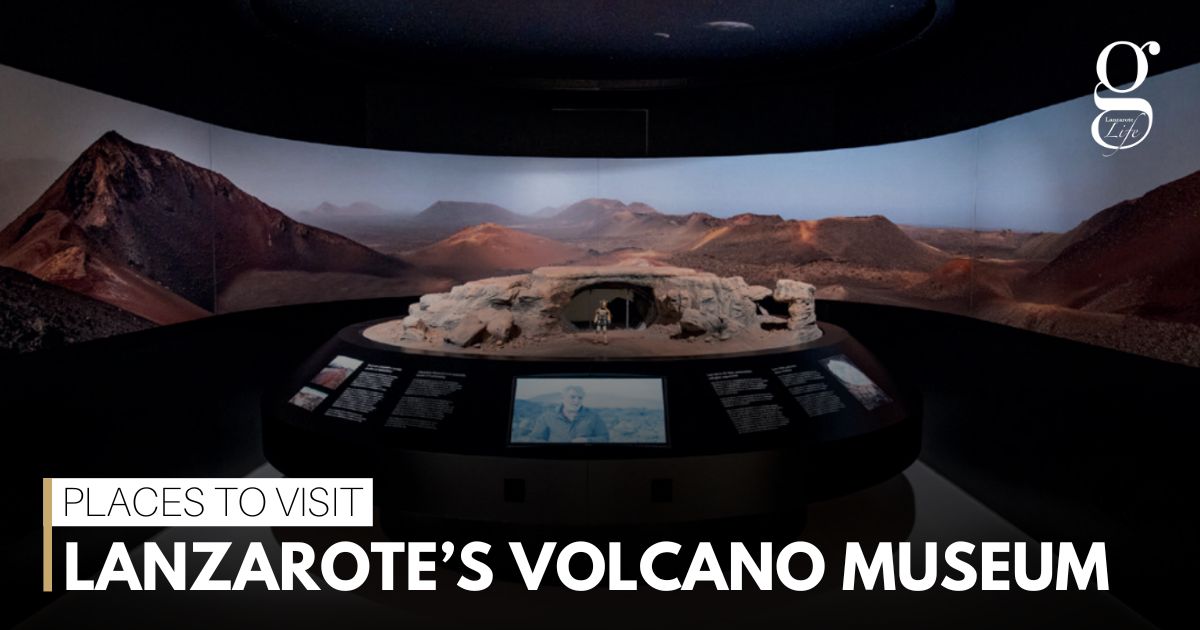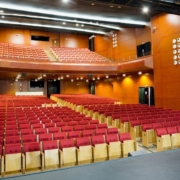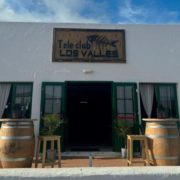We took a trip to the recently renovated Casa de Los Volcanes in the Jameos del Agua & discovered a fascinating interactive space that sheds light on Lanzarote’s volcanic origins.
Nowhere else on Lanzarote offers a more magical approach than the Casa de los Volcanes. To get there you descend into one of César Manrique’s most breathtaking creations, the Jameos del Agua, passing the peaceful lake containing unique white crabs, and emerging into a blinding white space with the most beautiful pool on the island. A set of stairs to your right leads up to the museum.
There has been a volcano museum here for years, but it had become a little shabby and neglected until recently, when the Cabildo carried out an intensive renovation project. The new museum opened in March and the result is fascinating – an attractive, fascinating space that will delight adults and children alike.
The Casa de los Volcanes is not just a museum – it’s also part of the monitoring programme that continually measures earth tremors and seismic activity on the island. Many of the older instruments used for this are on show, with their pencil printouts. However, at one point a sign tells you to STAMP!
The moment you do, you see a computer screen in front of you register the vibrations with a series of steep peaks and troughs. This immediately caused an impromptu flamenco display from a couple of delighted children, and is a sign of how user-friendly the new museum is.
Upstairs you’ll find a huge relief model of Lanzarote, with all its volcanoes clearly indicated. Video displays show how the volcanoes were formed in a chain, as tectonic plates moved slowly over the “hot spot” below, and it’s still a surprise to see how immense the Timanfaya eruptions of 300 years ago were.
What looks like a huge, illuminated worm dominates one area. It is, in fact, a model of the Atlantida Tunnel, which extends kilometres out to sea and contains unique life forms. This is one of those displays that you can quickly get lost in.
There are quizzes for children, videos showing how people like César Manrique, Jesús Soto and the visionary Cabildo President Pepín Ramírez transformed the island in the 1960s, and guides to the island’s wildlife. Fans of the old museum will be pleased to learn that some of the mirror displays are still there. A room entirely surrounded by mirrors gives a dizzying illusion of infinite reflections in all directions.
Another new feature is a virtual reality tour through the entire tunnel, with three languages offered. It’s perhaps the easiest way to appreciate how incredible this place is – a continuous tunnel stretching from the Monte Corona, with several jameos areas where the ceiling has collapsed and including the Cueva de los Verdes and Jameos del Agua, before continuing out to sea.
It’s a place that’s worth taking your time to explore and learn in depth. We had a great time sliding a video screen along a diagram of the tunnel, pressing for information on strange shrimps and underwater sand mountains.
There are also exhibits highlighting how Lanzarote has been chosen for research by astronauts from the European Space project because of its similarity to the surface of Mars.
And, of course, the whole museum reflects the vision of Manrique – clean, white galleries with lush, green plants, glimpses through a traditional Canarian window to the pool below and those big glass panels that Manrique loved.
For regular updates, pictures and videos of Lanzarote be sure to like and follow our Facebook page “Gazette Life Lanzarote”.











